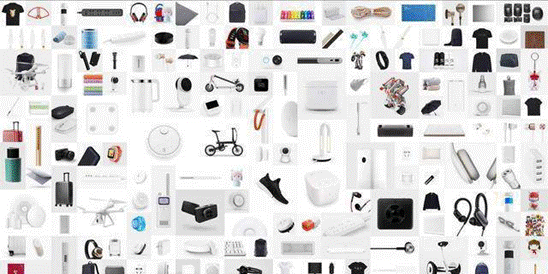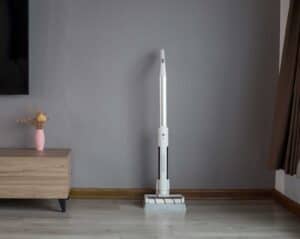Huawei’s launch of HarmonyOS was applauded widely against the backdrop of Sino-US trade war. Below is from Huawei official news.
At the Huawei Developer Conference on August 9, 2019, Huawei launched HarmonyOS – a new microkernel-based, distributed operating system designed to deliver a cohesive user experience across all devices and scenarios. HarmonyOS is a lightweight, compact operating system with powerful functionality, and it will first be used for smart devices like smart watches, smart screens, in-vehicle systems, and smart speakers. Through this implementation Huawei aims to establish an integrated and shared ecosystem across devices, create a secure and reliable runtime environment, and deliver a holistic intelligent experience across every interaction with every device.

Traditionally, new operating systems are released alongside new types of devices. As early as 10 years ago, Huawei envisioned a future where intelligence would seamlessly integrate with all aspects of our lives, and it began exploring how it might deliver this experience – one that would transcend the boundaries of physical space and span different hardware and platforms. Richard Yu, CEO of Huawei’s Consumer Business Group, explained the company’s thoughts behind developing this new OS. “We’re entering a day and age where people expect a holistic intelligent experience across all devices and scenarios. To support this, we felt it was important to have an operating system with improved cross-platform capabilities. We needed an OS that supports all scenarios, that can be used across a broad range of devices and platforms, and that can meet consumer demand for low latency and strong security.” “These were our goals with HarmonyOS,” he continued. “HarmonyOS is completely different from Android and iOS. It is a microkernel-based, distributed OS that delivers a smooth experience across all scenarios. It has trustworthy and secure architecture, and it supports seamless collaboration across devices. You can develop your apps once, then flexibly deploy them across a range of different devices.”
HarmonyOS – Four distinct technical feature
An all-scenario, intelligent experience sets a high bar for connectivity, so HarmonyOS was designed with four distinct technical features to deliver on its promise to consumers.

- Seamless: First-ever device OS with distributed architecture, delivering a seamless experience across devices


By adopting distributed architecture and distributed virtual bus technology, HarmonyOS offers a shared communications platform, distributed data management, distributed task scheduling, and virtual peripherals. With HarmonyOS, app developers won’t have to deal with the underlying technology for distributed apps, allowing them to focus on their own individual service logic. Developing distributed apps will be easier than ever before. Apps built on HarmonyOS can run on different devices while delivering a seamless, collaborative experience across all scenarios.

- Smooth: Deterministic Latency Engine and high-performance IPC


HarmonyOS will address underperformance challenges with a Deterministic Latency Engine and high-performance Inter Process Communication (IPC). The Deterministic Latency Engine sets task execution priorities and time limits for scheduling in advance. Resources will gravitate toward tasks with higher priorities, reducing the response latency of apps by 25.7%. The microkernel can make IPC performance up to five times more efficient than existing systems.
- Secure: Microkernel architecture that reshapes security and trustworthiness from the ground up
HarmonyOS uses a brand-new microkernel design that features enhanced security and low latency. This microkernel was designed to simplify kernel functions, implement as many system services as possible in user mode outside the kernel, and add mutual security protection. The microkernel itself provides only the most basic services like thread scheduling and IPC.
Harmony OS’s microkernel design uses formal verification methods to reshape security and trustworthiness from the ground up in a Trusted Execution Environment (TEE). Formal verification methods are an effective mathematical approach to validate system correctness from the source, while traditional verification methods, such as functional verification and attack simulation, are confined to limited scenarios. Formal methods, by contrast, can use data models to verify all software running paths. HarmonyOS is the first OS to use formal verification in device TEE, significantly improving security. In addition, because the HarmonyOS microkernel has much less code (roughly one-thousandth the amount of the Linux kernel), the probability of attack is greatly reduced.

- Unified: Multi-device IDE allows apps to be developed once and deployed across multiple devices
Powered by a multi-device IDE, multi-language unified compilation, and a distributed architecture kit, HarmonyOS can automatically adapt to different screen layout controls and interactions, and support both drag-and-drop control and preview-oriented visual programming. This allows developers to more efficiently build apps that run on multiple devices. With a multi-device IDE, developers can code their apps once and deploy them across multiple devices, creating a tightly integrated ecosystem across all user devices. The HUAWEI ARK Compiler is the first static compiler that can perform on par with Android’s virtual machine, enabling developers to compile a broad range of advanced languages into machine code in a single, unified environment. By supporting unified compilation in multiple languages, the HUAWEI ARK Compiler will help developers greatly improve their productivity.
To put it simply, Huawei launched an operating system applicable to the Internet of Things as the 5G era ushers in. More details are not yet be found out.
Huawei Smart Screen released on August 10, 2018, the first to carry HarmonyOS, can be referred to.

Its parameters are shown below.

It brings following changes to cleaning appliances.
- Liftable camera
 Huawei Smart Screen carries a liftable camera like that of OPPO. Rising when the display is on and dropping when off, it is predicted to be a standard feature of TV and related products led by Huawei, which means the module costs are likely to be further cut.
Huawei Smart Screen carries a liftable camera like that of OPPO. Rising when the display is on and dropping when off, it is predicted to be a standard feature of TV and related products led by Huawei, which means the module costs are likely to be further cut.
Raised laser head is a signature of the robot cleaner with laser navigation. Quite a few friends came to me for a solution to the liftable laser head, but we gave up at last considering costs and technology barriers. In case it is largely applied to TVs, the robot cleaner’ laser head will predictably become liftable in the short run.
 Intelligent connectivity – door bell
Intelligent connectivity – door bell

Huawei Smart Screen connected with a door bell will capture images of the door viewer upon the doorbell.
This reminds me that Dyson V11 has been complete with a screen displaying
battery and simple breakdown info, quite simple, yet predictably to be smarter
in the future.

When everything is interconnected, will a center device be necessary? Cellphone, voice box, sweeping robot are taken as center once a time and now smart TV. Is there possibility of interconnectivity across devices without a center?
I conjured up a handy Internet tool “ifttt” short for “if this then that” that allows your behaviors online to trigger chain reactions and facilitate your use, aimed to “Put the internet to work for you”. It helps users link up websites such as Facebook, Twitter or apps in virtue of open API to fulfill tasks, making “each user a programmer that does not programme”. It strings together all sorts of info through flows and render what you want, separating the info noise and just focusing on the essential info.
When everything is interconnected, connectivity across devices is possible as long as interfaces are available.You may simply imagine these scenarios:
If your sweeping robot does not work, then automatically call your boyfriend
If your boyfriend is not at home, then automatically call neighbor Mr. Wang

- First–ever device OS with distributed architecture, delivering a seamless experience across devices
My pal who has already bought dozens of MI devices told me MI will continue to be his only option, otherwise, experience across devices is not possible.
Huawei will see the eco-chain created by HarmonyOS a powerful weapon to rival MI, as more players are encouraged to join, eying the linkage effect brought by the 1+8+N pattern.
Both MI and Huawei ecological chains set thresholds for businesses and products, so the product quantity on both chains is limited. HarmonyOS is different, as products developed on OS system and up to certain standards can functionally interconnect with other devices.
When you refer to knock-off Android cellphones of all sizes, you will find them compatible and interconnected regardless of quality difference. In that sense, Huawei eco-chain will embrace much more products than its counterparts.
It is better to wait and see after the open source of HarmonyOS.







